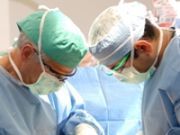How Does an Aging Surgeon Population Affect Patient Care?
A recent study showed that a large number of surgeons in the United States are reaching retirement age with no plans to put down their scalpel. What this can mean to the patients they treat has yet to be determined.

The February 2016 issue of The Surgical Clinics of North America directs our attention to a not-unexpected but important fact: Approximately one-third of currently active surgeons in the United States are older than 55-years-old, and 15% of surgeons are older than 65. Many of these surgeons have no plans to retire, and unlike commercial pilots or surgeons in the United Kingdom, they are not subject to mandatory retirement, but they face the same changes associated with aging that all people do.
Certain surgical specialties tend to have older physicians. The oldest average age was identified among urology and thoracic surgeons, and orthopedic, ophthalmic and plastic surgery specialists follow closely behind. Rural areas tend to have older surgeons than urban areas.
In academia, surgical educators are also aging. Since 1967, the average proportion of educators aged 55 or older has increased from 9 to 27%.
One concern about aging surgeons is that most experience a slow decline in physiologic processes. Declining neurocognitive, sensory, and neuromuscular function can negatively influence patient care.
The authors address surgical practice’s growing complexity and the possibility that physiologic impairments associated with aging might limit the aging surgeon’s ability to keep up. Studies have been conducted and are underway to examine this possibility. Some studies have reported that older surgeons often have knowledge deficits and may eschew some modern standards of care.
Finally the authors discuss what they call a paradox. They indicate that although many people believe that greater experience is beneficial, an evolving body of literature documents an inverse relationship between greater experience and quality patient outcomes.
The authors discuss ways to assess competency including robust recertification programs. They indicate that self-assessment and peer review programs can be flawed, and should not be used to determine competence.
The authors also cover mechanisms aging surgeons employ to remains in practice, and conclude with a recommendation that the healthcare systems needs to develop positions for older surgeons so they can continue to contribute.